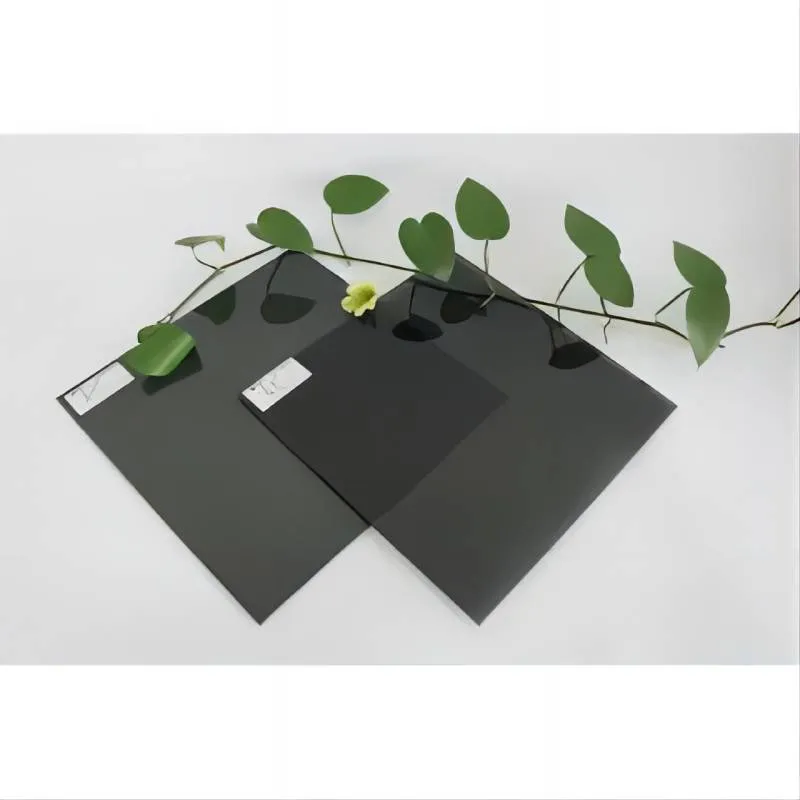The Float Glass Process Revolutionizing Glass Manufacturing
The float glass process is a groundbreaking method that has significantly transformed the glass manufacturing industry since its introduction in the mid-20th century. This innovative technique allows for the production of flat glass with exceptional quality and uniform thickness, making it widely used in applications ranging from windows to mirrors and architectural designs.
The float glass process was developed in the 1950s by Sir Alastair Pilkington, and it fundamentally changed the way glass was produced
. Before this process, glass manufacturing often involved intricate and labor-intensive methods that resulted in uneven surfaces and varying thicknesses. Pilkington's method offered a more efficient solution by leveraging the natural properties of molten glass.
At the heart of the float glass process is the simple yet ingenious principle of floating. The process begins with the melting of raw materials, primarily silica sand, soda ash, and limestone, in a furnace at very high temperatures, typically around 1,700 degrees Celsius (3,092 degrees Fahrenheit). Once melted, the glass is then transported to a float bath, where it is carefully poured onto a bed of molten tin. This is where the unique characteristics of the float glass process come into play.
Because glass is less dense than molten tin, it spreads out evenly on the surface, creating a smooth, flat layer of glass as it floats on the tin. This eliminates the need for the grinding and polishing processes that were previously necessary to achieve flat surfaces. The controlled environment of the float bath also allows for consistent thicknesses, which can range from a mere 2 mm to more than 25 mm, depending on the intended application.
float glass process
As the glass moves through the float bath, it undergoes a process of cooling and solidification. The glass is drawn further along the line to a cooling zone, where it gradually loses temperature, transforming from a viscous liquid into a solid state. Throughout this journey, the floating tin helps ensure that the glass maintains its flatness and surface quality.
Once the glass has fully cooled, it is carefully cut into sheets of the desired dimensions and subjected to a series of inspections to ensure it meets quality standards. The final product can then be processed further for various applications, including laminating, tempering, or coating, depending on client specifications.
The environmental advantages of the float glass process are also noteworthy. It is known for its energy efficiency, with many modern float glass plants incorporating advanced technologies to minimize energy consumption and reduce emissions. Furthermore, the use of recycled glass in the production process not only reduces waste but also contributes to a circular economy.
In summary, the float glass process is a remarkable innovation that has revolutionized flat glass manufacturing. Its ability to produce high-quality, uniform glass with minimal imperfections has established it as the industry standard. From architectural uses to everyday products, the influence of the float glass process is seen everywhere, making it an essential component of modern construction and design. As technology continues to evolve, the float glass process will likely remain a cornerstone of the glass industry, adapting to new demands and sustainable practices.
 Afrikaans
Afrikaans  Albanian
Albanian  Amharic
Amharic  Arabic
Arabic  Armenian
Armenian  Azerbaijani
Azerbaijani  Basque
Basque  Belarusian
Belarusian  Bengali
Bengali  Bosnian
Bosnian  Bulgarian
Bulgarian  Catalan
Catalan  Cebuano
Cebuano  Corsican
Corsican  Croatian
Croatian  Czech
Czech  Danish
Danish  Dutch
Dutch  English
English  Esperanto
Esperanto  Estonian
Estonian  Finnish
Finnish  French
French  Frisian
Frisian  Galician
Galician  Georgian
Georgian  German
German  Greek
Greek  Gujarati
Gujarati  Haitian Creole
Haitian Creole  hausa
hausa  hawaiian
hawaiian  Hebrew
Hebrew  Hindi
Hindi  Miao
Miao  Hungarian
Hungarian  Icelandic
Icelandic  igbo
igbo  Indonesian
Indonesian  irish
irish  Italian
Italian  Japanese
Japanese  Javanese
Javanese  Kannada
Kannada  kazakh
kazakh  Khmer
Khmer  Rwandese
Rwandese  Korean
Korean  Kurdish
Kurdish  Kyrgyz
Kyrgyz  Lao
Lao  Latin
Latin  Latvian
Latvian  Lithuanian
Lithuanian  Luxembourgish
Luxembourgish  Macedonian
Macedonian  Malgashi
Malgashi  Malay
Malay  Malayalam
Malayalam  Maltese
Maltese  Maori
Maori  Marathi
Marathi  Mongolian
Mongolian  Myanmar
Myanmar  Nepali
Nepali  Norwegian
Norwegian  Norwegian
Norwegian  Occitan
Occitan  Pashto
Pashto  Persian
Persian  Polish
Polish  Portuguese
Portuguese  Punjabi
Punjabi  Romanian
Romanian  Russian
Russian  Samoan
Samoan  Scottish Gaelic
Scottish Gaelic  Serbian
Serbian  Sesotho
Sesotho  Shona
Shona  Sindhi
Sindhi  Sinhala
Sinhala  Slovak
Slovak  Slovenian
Slovenian  Somali
Somali  Spanish
Spanish  Sundanese
Sundanese  Swahili
Swahili  Swedish
Swedish  Tagalog
Tagalog  Tajik
Tajik  Tamil
Tamil  Tatar
Tatar  Telugu
Telugu  Thai
Thai  Turkish
Turkish  Turkmen
Turkmen  Ukrainian
Ukrainian  Urdu
Urdu  Uighur
Uighur  Uzbek
Uzbek  Vietnamese
Vietnamese  Welsh
Welsh  Bantu
Bantu  Yiddish
Yiddish  Yoruba
Yoruba  Zulu
Zulu 

